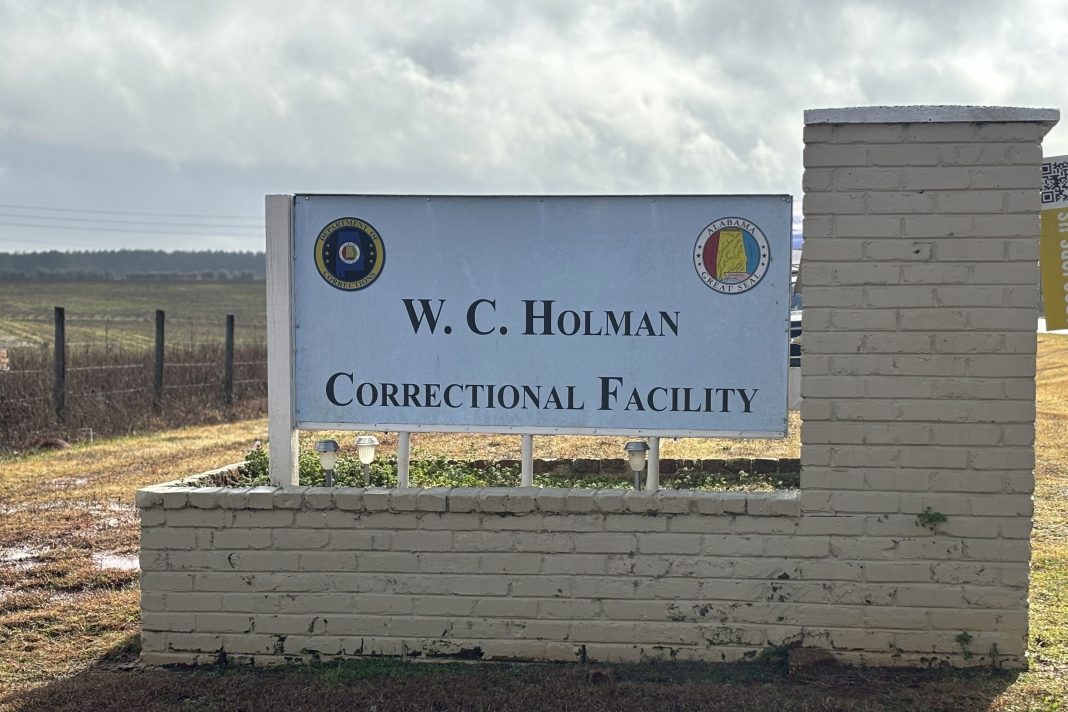In the shadowy corridors of Alabama’s correctional facilities, the execution team operates under a veil of secrecy, their identities and histories largely hidden from public scrutiny. At the helm is Brandon McKenzie, the captain of this team, whose role is as chilling as it is pivotal. As the leader of the execution squad, he is often the last person to touch a prisoner before they are put to death, a responsibility that carries profound ethical implications and raises critical questions about the integrity of the state’s capital punishment system.
McKenzie’s ascent to this position of authority is particularly troubling given his controversial past. Just two months after a federal civil rights lawsuit was filed against him by Lawrence Phillips—an inmate who accused McKenzie of violently assaulting him—he was promoted to captain. Phillips’s allegations detailed a harrowing encounter in which he claimed McKenzie smashed his head through a window and slammed him into a concrete floor, resulting in severe injuries that required hospitalization. In his complaint, Phillips described the lasting psychological trauma he endured, including nightmares and memory loss, stating, “I’ve not been the same since.” Despite these serious allegations, McKenzie continued to oversee executions, earning a salary exceeding $135,600 in a state where the median household income hovers around $62,000.
The Alabama Department of Corrections (ADOC) has largely stood by McKenzie, asserting that his use of force was justified. However, a federal magistrate judge expressed skepticism, suggesting that a reasonable jury might find that McKenzie acted with malicious intent rather than in a legitimate effort to maintain order. This sentiment underscores a broader concern about the culture of impunity that seems to permeate the ranks of those responsible for carrying out death sentences in Alabama.
An investigation into the execution team reveals that McKenzie is not an isolated case. Numerous team members have faced allegations of misconduct or violence against inmates. For instance, one officer was previously disciplined for failing to cut down a man who had attempted suicide, leaving him hanging in his cell. Another member had a history of drunken violence, having attacked a jail guard in Florida. Despite these troubling backgrounds, both individuals were allowed to participate in executions, raising serious ethical questions about the selection and oversight of those tasked with such a grave responsibility.
Experts in capital punishment have voiced concerns about the implications of allowing individuals with histories of violence to oversee executions. Brian Stull, a senior staff attorney with the American Civil Liberties Union’s Capital Punishment Project, remarked, “A system that cannot be trusted to keep prisoners safe is a system that should not have the right to kill.” This sentiment is echoed by Alison Mollman, legal director at the ACLU of Alabama, who emphasized the need for accountability and transparency in the execution process.
The lack of transparency surrounding Alabama’s execution procedures is alarming. While some states have enacted secrecy laws to shield execution details from public view, Alabama’s approach has been characterized by a troubling opacity. The state only released its execution protocols in 2019, following a court order, and even then, the information was heavily redacted. Robert Dunham, director of the Death Penalty Policy Project, has criticized Alabama for being among the worst states in terms of execution transparency, highlighting the urgent need for oversight.
The execution team members, many of whom lack medical training, are responsible for ensuring that executions are conducted according to protocol. This includes tasks such as securing the inmate to a gurney and monitoring vital signs during lethal injections. However, the execution of Kenneth Smith in January 2024, which utilized nitrogen gas, raised significant concerns when witnesses reported that Smith exhibited violent, seizure-like movements during the process. McKenzie, who was present during the execution, submitted an affidavit claiming that he did not observe any such movements, a statement that has been met with skepticism given the conflicting accounts from witnesses.
As Alabama prepares to conduct another nitrogen execution, the case of Alan Eugene Miller looms large. Miller’s legal team has raised constitutional objections to the method, arguing that it could lead to cruel and unusual punishment. They have pointed to McKenzie’s involvement in the execution process as a source of concern, questioning the qualifications and training of those responsible for administering such a significant and irreversible act.
The troubling narratives surrounding Alabama’s execution team extend beyond individual misconduct to a systemic failure of oversight and accountability. The tragic case of Jamal Jackson, who died by suicide on death row in 2020, highlights the dire consequences of neglect within the prison system. His aunt, Tarji Jackson, was not informed of his death until after the fact, and an investigation revealed that a lieutenant on the execution team had failed to follow protocol in responding to the incident. Despite being demoted for his actions, the lieutenant continued to participate in executions, raising serious questions about the standards of care and responsibility expected of those in such critical roles.
In a state where executions are shrouded in secrecy and conducted by individuals with questionable backgrounds, the call for reform is more pressing than ever


